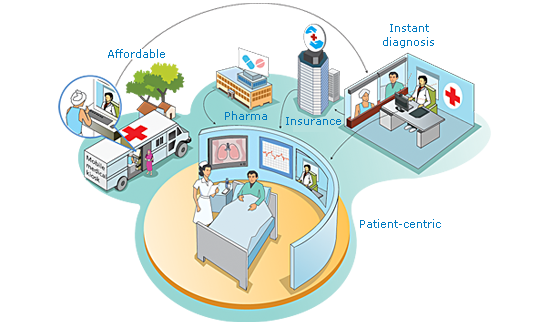 A Fortune 500 retail company is known for
its innovative employee healthcare offerings.
It surprised market observers by managing to
keep its healthcare cost flat from 2005 to 2009.
The company realized that 70% of its healthcare
costs were the result of lifestyle patterns, and
74% of these costs could be attributed to
four largely preventable chronic conditions:
cardiovascular disease, cancer, diabetes and
obesity. It encouraged its employees to adopt
healthy lifestyles by reducing the annual premium
(by US $780 for the individual and US $1,560 for
the family) if an employee passed all the tests for
preventable conditions. The company estimates
that the U.S. can save $800 billion by adopting a
similar approach.
A Fortune 500 retail company is known for
its innovative employee healthcare offerings.
It surprised market observers by managing to
keep its healthcare cost flat from 2005 to 2009.
The company realized that 70% of its healthcare
costs were the result of lifestyle patterns, and
74% of these costs could be attributed to
four largely preventable chronic conditions:
cardiovascular disease, cancer, diabetes and
obesity. It encouraged its employees to adopt
healthy lifestyles by reducing the annual premium
(by US $780 for the individual and US $1,560 for
the family) if an employee passed all the tests for
preventable conditions. The company estimates
that the U.S. can save $800 billion by adopting a
similar approach.
Does the demand and consumption of healthcare
affect the economy? Issues related to scarcity in healthrelated
amenities, and the social causes of healthaffecting
lifestyle and behavior might significantly
alter the economics of the healthcare sector. Cost,
inconsistent quality and accessibility are some of the
key challenges in healthcare delivery across economies.
The affordability of healthcare is affected by factors
like rising elderly population living well beyond their
earning years, and increased incidence of chronic
diseases, among others. According to experts,
30% of the healthcare delivered in the U.S.
is unnecessary. IT can minimize errors and
redundant diagnostic tests and treatments,
while ensuring better healthcare delivery
through patient data analytics, evidence-based
medication, paperless transactions, etc.
Current healthcare practices focus on symptoms and
regard the patient as a passive recipient of service.
Patient-centric care has to consider the patients'
values, involve them in clinical decisions, offer
information and ensure transparency and self-care.
With IT integration, patients can be accorded personal
attention through seamless communication and
interactions with their care providers.
As healthcare costs rise, consumers are looking for
healthy alternatives in everything they consume.
Enterprises are promoting healthy work life, insurers
and providers are offering programs that support
wellness, prevention, and early detection. Prevention
is another focus area. A significant portion of future
healthcare spending will be on vaccines, genome
sequencing and other means of preventing chronic conditions.
Several healthcare providers have enlisted
social media to promote preventive healthcare.
Bioinformatics and patient data analytics would play a
critical role in improving prevention statistics. The shift
from cure to prevention provides a huge opportunity
for investing in wellness. The trend of considering
healthcare across sectors such as manufacturing, retail,
financial services, travel and tourism has already begun
to transform established business models.
Our expertise in software and technology R&D was
used in the initiative led by the Council of Scientific
and Industrial Research (CSIR) to develop Genome
Informatics on the tuberculosis bacterium. We aim to
use similar expertise to coordinate between multiple
players in the healthcare sector, thus enabling our
clients to get maximum benefits from the major shifts
in the sector. |